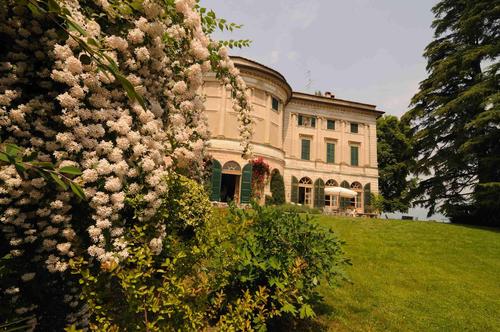Parco di Villa Carcano
Visit the Parco di Villa Carcano
PRESENTATION
History and description

The Park of Villa Carcano in Anzano extends on the slopes of a hill, facing east, and over a small valley, with an outstanding view of Lake Alserio, the mountains Grigne and Resegone.
The Carcano, a family of the aristocracy of Milano, was present by the early seventeenth century also in Anzano, where they had established an important farming exploitation. This farm extended on land that lays far beyond the borders of the current park.
In 1794-95 the Marquis Alessandro Carcano built on the site an imposing neo-classical style Villa, designed by the Austrian architect Leopoldo Pollack. Around the Villa, his son Carlo Camillo in 1805-1808 had a stone wall erected enclosing an area of over 40 hectares to develop and complete the Park and started introducing rare botanical specimens.
The vast park was created according to the landscape or romantic style following the sketches of Pollack and including structures and elements that accentuate the romantic atmosphere. Besides the farm buildings existing at the time, were built many nice pieces of decoration and for leisure: kiosks, porches, a small theater scene and a second ice house near the Villa. Among an alternance of wide meadows and fresh valleys was created a large lake with two islands accompanied by two smaller lakes. All this, surrounded by alleys of stately trees and masses of botanical specimen now almost two centuries old.
Among the most interesting tree specimens have to be mentioned several very old Celtis australis, Ginkgo Biloba, Aesculus hippocastanum and then Chamaecyparis, yews, cedars. Entering the park you are met by masses of palms and bay trees, a spectacular Fagus 'Purpurea Tricolor', a group of very tall Abies nordmanniana, centuries-old chestnut trees and magnolias. An avenue of old hornbeam, in the past bent and arranged to form a canopy – “carpinata” - leads to the main lake, filled with water lilies and wildlife, with two islands and, under a peninsula, a navigable tunnel. Up to the first half of the twentieth century the lake was used to produce ice in winter. Ice was cut in slabs, stored in the two ice houses of the property and then sold during the summer and offered as charity in the neighborood.
Since its creation, the Park was lived by the family Carcano - which still owns it - not as a formal garden to be exhibited, but as the living environment and leisure place of the family. And this is still the atmosphere that you breathe, without concessions to architectural or botanical exteriority: a nice place to experience and discover.